
by Ria Olivier | Jun 20, 2020 | Antarctica, International Days, Research, SANAE, SANAP, Science

 “Auroras provide direct visual evidence that the atmosphere is shielding life on Earth from the radiation hazards of space.” – Michael Kosch, SANSA.
“Auroras provide direct visual evidence that the atmosphere is shielding life on Earth from the radiation hazards of space.” – Michael Kosch, SANSA.
Today Overwintering Teams are celebrating Midwinter. With this in mind we would like to share some information on Aurora Australis. The research on Auroras in SANAP would be under the jurisdiction of SANSA. Although they do not currently have an aurora program, there is a possibility of doing research on it in the future. The spectacular and beautiful auroras, usually seen at polar latitudes, are caused by high energy particles bombarding the upper-atmosphere. These particles originate from the sun and travel across the void towards Earth as the solar wind, moving at around 500 km/sec.


 About 10% of the solar wind becomes trapped on the Earth’s magnetic field lines in a process called magnetic reconnection, the rest is rejected and flows past the planet into deep space. The trapped particles accumulate, but this cannot go on forever. They are eventually released into the upper-atmosphere in a process called substorms, exciting the atomic oxygen and molecular nitrogen to produce the familiar green and red colours from oxygen, and sometimes the blue colour as well from nitrogen. Charged particles, such as electrons and protons, are constrained to follow the magnetic field lines, and since the Earth’s magnetic field is similar to a dipole bar magnetic, it is only in polar regions where the magnetic field lines reach down to the ground, which is why the auroras appear mostly in polar regions.
About 10% of the solar wind becomes trapped on the Earth’s magnetic field lines in a process called magnetic reconnection, the rest is rejected and flows past the planet into deep space. The trapped particles accumulate, but this cannot go on forever. They are eventually released into the upper-atmosphere in a process called substorms, exciting the atomic oxygen and molecular nitrogen to produce the familiar green and red colours from oxygen, and sometimes the blue colour as well from nitrogen. Charged particles, such as electrons and protons, are constrained to follow the magnetic field lines, and since the Earth’s magnetic field is similar to a dipole bar magnetic, it is only in polar regions where the magnetic field lines reach down to the ground, which is why the auroras appear mostly in polar regions.


 Auroras appear in the height range 100 to 300 km above the Earth’s surface, typically with red, green and blue appearing near the top, middle and bottom, respectively, of this height range. The height of the auroras, and therefore their colour, depends on the energy of the particles, with higher energy able to penetrate to lower altitudes. Auroras are rarely seen at lower latitudes such as South Africa except during major geomagnetic storms, an example of which occurred in 1989 when auroras were visible from Durban.
Auroras appear in the height range 100 to 300 km above the Earth’s surface, typically with red, green and blue appearing near the top, middle and bottom, respectively, of this height range. The height of the auroras, and therefore their colour, depends on the energy of the particles, with higher energy able to penetrate to lower altitudes. Auroras are rarely seen at lower latitudes such as South Africa except during major geomagnetic storms, an example of which occurred in 1989 when auroras were visible from Durban.
 The following are a few articles in the South African Journal on Antarctic Research available on the Antarctic Legacy of South Africa (ALSA) digital repository
The following are a few articles in the South African Journal on Antarctic Research available on the Antarctic Legacy of South Africa (ALSA) digital repository
Geomagnetism and Aurora Programme in Antarctica – Short summary of the Aurora and Magnetic Programmes in Antarctica by G Kuhn
WAND auroral imager for SANAE written by G Hough and MWJ Scourfield.
Aurorae are optical emissions excited by the collisions of charged particles with the upper atmosphere at about 100 km, the altitude of the ionospheric E-region. In fact, the ionosphere has often been likened to a giant TV screen. For the latter, the electrons are fired from an electron gun, whereas the sources of high energy electrons that cause aurorae are located in the magnetosphere. One of the central problems in space physics is locating the sources and mechanisms causing the acceleration of auroral particles. The Wide Angle No Distortion (WAND) was designed, prototype built, and tested at SANAE-3 in 1993. The unique mirror optics removed the circular distortion of standard fisheye lenses, making the image of the sky recti-linear for a fixed latitude.
Magnetospheric electrons precipitating into the atmosphere by Pieter Stoker.
The International Magnetospheric Study (IMS) and the Antarctic and Southern Hemisphere Aeronomy Year (ASHAY) by JA Gledhill
Text for post provided by Michael Kosch of SANSA. Principal investigator in SANAP.
Images from ALSA repository contributed by Gareth de Villiers, Harm Moraal, Beneke De Wet and Mark St Quintin.
Article references provided by ALSA, all articles available on the ALSA repository.
Compiled by Ria Olivier, Antarctic Legacy of South Africa.

by Ria Olivier | May 24, 2020 | Research, SANAP, Science

 It is nearing the end of the 2018-2020 research cycle within the SANAP funding instrument and new proposals for the next cycle (2021-2023) have already been submitted. This is a brief reflection of institutions that are involved within SANAP. All detail relating to the funding framework guiding SANAP awards and proposals; as well as research plans and strategies that need to be taken into account are available on the Antarctic Legacy Digital repository.
It is nearing the end of the 2018-2020 research cycle within the SANAP funding instrument and new proposals for the next cycle (2021-2023) have already been submitted. This is a brief reflection of institutions that are involved within SANAP. All detail relating to the funding framework guiding SANAP awards and proposals; as well as research plans and strategies that need to be taken into account are available on the Antarctic Legacy Digital repository.
 South Africa’s geographical coverage of the Southern Hemisphere oceans and access to the Antarctic region. The coloured lines represent the domains covered by annual South African research and logistical voyages (carried out by the S.A. Agulhas II): Marion Island, Gough and Tristan du Cunha Islands, SANAE IV base, South Georgia Island and South Sandwich Islands. The blue lines represent the northern and southern extent of the Antarctic Circumpolar Current, while the magenta line represents the position of the Agulhas Current and Retroflection. The maximum winter sea-ice extent is indicated. The background shading represents the ocean depth (meters below sea-level).
South Africa’s geographical coverage of the Southern Hemisphere oceans and access to the Antarctic region. The coloured lines represent the domains covered by annual South African research and logistical voyages (carried out by the S.A. Agulhas II): Marion Island, Gough and Tristan du Cunha Islands, SANAE IV base, South Georgia Island and South Sandwich Islands. The blue lines represent the northern and southern extent of the Antarctic Circumpolar Current, while the magenta line represents the position of the Agulhas Current and Retroflection. The maximum winter sea-ice extent is indicated. The background shading represents the ocean depth (meters below sea-level).
Excerpt from the framework document: “The mandate of the National Research Foundation (NRF) is to support and promote research through funding, human resource development and the provision of the necessary research facilities in order to facilitate the creation of knowledge, and innovation and development in all fields of science and technology, including indigenous knowledge and thereby to contribute to the improvement of the quality of life of all the people of the Republic (NRF Act, 1998). In support of its purpose, the NRF Strategy 2020 that aims at two strategic outcomes, namely a vibrant and globally connected national system of innovation, and a representative research and technical workforce.”
“The South African National Antarctic Programme (SANAP) is a region-specific, theme-driven funding instrument. SANAP research addresses the research themes detailed in the South African Antarctic and Southern Ocean Research Plan (2014-2024) and underpins by the overarching South African Marine and Antarctic Research Strategy (MARS) of 2015. The Antarctic and Southern Ocean Research Plan (the Research Plan) is focused on an integrative systems approach to understanding the evolution of the earth systems and ecosystems in the 21st Century.

SANAP Projects host at different Institutions
The Research Plan provides the overarching framework of operations for SANAP research activities and follows the integrated progression from Earth Systems to Ecosystems to Human Systems in the research themes. Human activities and socio-political complexities in this international arena are of equal importance.

| Projects by Themes |
| Earth Systems |
17 |
59% |
| Engineering, Technology & Innovation |
1 |
3% |
| Human Enterprise |
1 |
3% |
| Knowledge development |
2 |
7% |
| Living Systems |
8 |
28% |

| Projects by Institutions |
| CSIR – Natural Resources and the Environment |
4 |
14% |
| DEFF (Oceans and Coasts) |
1 |
3% |
| Nelson Mandela Metropolitan University |
2 |
4% |
| NWU |
1 |
3% |
| South African National Space Agency |
2 |
4% |
| Stellenbosch University |
4 |
14% |
| University of Cape Town |
5 |
17% |
| University of Fort Hare |
1 |
3% |
| University of Johannesburg |
2 |
4% |
| University of KwaZulu-Natal |
1 |
3% |
| University of Pretoria |
5 |
17% |
| University of the Witwatersrand |
1 |
3% |
Ria Olivier, Antarctic Legacy of South Africa.

by Ria Olivier | May 23, 2020 | Antarctica, Geomorphology, Research, SANAP, SANAP Student, Science, Women in Science
 Liezel (Elizabeth) Rudolph obtained her Geography BSc and Honours degrees at the University of Pretoria, and a MSc at Rhodes University. She also has a PGCE from UNISA, which allowed her to teach Geography at Abbott’s College in Pretoria for a few years. She is currently in the final stages of her PhD (also in Geography) at the University of Fort Hare. She currently lectures Geomorphology at the University of the Free State. Her postgraduate research focussed on glacial and peri-glacial landforms and their response to (past and present) climate change. These studies afforded her opportunities to visit the research stations on Marion Island and in the Antarctic, working with SANAP-NRF funded programmes in geomorphology – Landscape Processes in Antarctic Ecosystems and Sub-Antarctic Landscape-Climate Interactions.
Liezel (Elizabeth) Rudolph obtained her Geography BSc and Honours degrees at the University of Pretoria, and a MSc at Rhodes University. She also has a PGCE from UNISA, which allowed her to teach Geography at Abbott’s College in Pretoria for a few years. She is currently in the final stages of her PhD (also in Geography) at the University of Fort Hare. She currently lectures Geomorphology at the University of the Free State. Her postgraduate research focussed on glacial and peri-glacial landforms and their response to (past and present) climate change. These studies afforded her opportunities to visit the research stations on Marion Island and in the Antarctic, working with SANAP-NRF funded programmes in geomorphology – Landscape Processes in Antarctic Ecosystems and Sub-Antarctic Landscape-Climate Interactions.



Where you come from where did it all started
I grew up in Pretoria. I never knew what I wanted to be when I grow up – all my friends had career aspirations, but I had interests. I liked variety and the thought of having one, predictable job for the rest of my life scared me endless. I had a keen interest in earth and physical sciences, but I also really enjoyed the arts and design. However, I was neither a Newton nor a Michelangelo at school and the prospect of either as a career path did not sit quite well with me. By the time I finished school I could still not decide on a single career and nothing in the university catalogues seemed to tick all the boxes. So, by process of elimination, I crossed out everything that sounded boring or would involve living creatures (I faint at the sight of blood), and the only thing that was left was Geography. I should’ve known – it’s a science that allows, no, encourages, variety of thought and expression. But I didn’t end up in research straight away. After I finished my Honours in Geography, I taught high school for a few years before returning to full-time studies to pursue a Masters. During my Masters though, I truly missed teaching. There’s something magical about sharing your passion on a subject with young people, and them getting equally excited about it. Its then that I realised a career where I can actively pursue my research interests, and teach, would be my dream job. I don’t believe I could’ve reached this realisation on my own. I had many mentors (parents, teachers, bosses, supervisors) who could lead, inspire and guide me. Through my post-school adult years, I didn’t always know how things will play-out, but I stuck to things I enjoyed and tried to do everything to the best of my ability. I could have followed a more predictable career path, but I may not have been so excited about it, as I am about what I get to do now. I am now lecturing Geomorphology at the University of the Free State and pursuing a PhD in Geography which, on top of everything, is on a topic I’ve been fascinated with since I first read a short story in my English class, at age 11 – glaciers.




Why you love your career in science?
It never grows old. With new discoveries come a flood of new unanswered questions. It pushes your mental limits and if you like that sort of challenge, you won’t easily get bored. Geography, especially, allows you to think both critically and creatively – it’s like playing a game with rules, but you are allowed to invent new rules. It allows you to visit amazing landscapes (if you’re a Geographer) and meet new and interesting people. Perhaps the best part of is, that it allows you to explore something you are very curious about, and you get to share your findings with an audience that are interested. At the same time, you benefit from what others have discovered about their own curiosity. It’s a constant learning process. In my experience I’ve gotten to work with incredible minds in the Southern African Geomorphology community, and have had the privilege to meet world-class scientists form other fields within the greater SANAP community – all who very passionate about their research fields and to whom I owe much of my passion for science. I am currently serving on the Association of Polar Early Carer Scientists’ South African National Committee (APECSSA), which has awarded me the opportunity to meet other early career scientists, not only from the Earth Science field, but from the Ocean-, Biological-, Botanical- and Space-physics sciences, to name a few. I don’t know of many other careers that would you expose you to such a variety of people and places.



“Science is like art, perhaps with a few more rigorous guidelines, and it allows you to draw on your own unique talents – just like an artist has a specific style. So, you should play by the rules, but you don’t have to fit a mould. Find mentors and listen to their advice. Make your own decisions and take responsibility for yourself. Don’t do anything halfies – finish what you’ve started and do it properly, or leave it all together. I believe that no time spent doing something well, is ever time wasted – experience is what makes us human. People will always be more important than science, so value your personal and professional relationships.” – Liezel
Links:
google scholar: https://scholar.google.co.za/citations?user=lwGJSqAAAAAJ&hl=en
Facebook: https://web.facebook.com/apecssa/ ;
https://web.facebook.com/sanaplci/
Twitter: @Apecssa; @sanaplci
Interview: GrootOntbyt /GrootFM 90.5, a community radio station in Pretoria.
Interview: at Aktru research station, in Siberia.
Article: Early glacial maximum and deglaciation at
sub-Antarctic Marion Island from cosmogenic 36Cl exposure dating
Text and Images: Liezel Rudolph

by Ria Olivier | May 22, 2020 | Antarctica, Gough Island, Marion Island, SANAP, sub-Antarctic
 Otto Whitehead is an ecologist who enjoys making films about people and nature. The Antartic Legacy of South Africa(ALSA) shows his video’s during public lectures and South Africa National Antarctic programme (SANAP) overwinter team training . These video’s and images of Otto Whitehead are a huge contribution in promoting and preserving South Africa’s Legacy of the Antarctic region.
Otto Whitehead is an ecologist who enjoys making films about people and nature. The Antartic Legacy of South Africa(ALSA) shows his video’s during public lectures and South Africa National Antarctic programme (SANAP) overwinter team training . These video’s and images of Otto Whitehead are a huge contribution in promoting and preserving South Africa’s Legacy of the Antarctic region.
What is your involvement with SANAP?
I was privileged to overwinter on Marion Island in 2011/12 as a seabird researcher, which to date has been the most profound experience of my life. I collected data towards a PhD on the foraging ecology of crested penguins, which I completed in 2017. I have since remained involved in the sub-Antarctic community through a post-doctoral fellowship at the South African National Biodiversity Institute where I led the sub-Antarctic chapter of the 2018 National Biodiversity Assessment.

 In 2017, I assisted National Geographic photographer Thomas Peschak on a shoot to document Marion Island’s incredible seabird diversity, during which we received enormous support from SANAP. Images from the trip were published in the July 2018 issue of National Geographic Magazine as part of a global seabird story. (On Marion Island left: Thomas Peschak, right: Otto Whitehead )
In 2017, I assisted National Geographic photographer Thomas Peschak on a shoot to document Marion Island’s incredible seabird diversity, during which we received enormous support from SANAP. Images from the trip were published in the July 2018 issue of National Geographic Magazine as part of a global seabird story. (On Marion Island left: Thomas Peschak, right: Otto Whitehead )


 (Images during 2011/2012 on Marion Island. L-R: Ice Plateau, Amphitheatre, Mascarin Summit)I have also really enjoyed being able to share my images and video from my time on Marion with initiatives promoting the conservation of this special part of the planet, such as Mouse Free Marion and the new Sentinels of the South exhibition at the Iziko Museum and the ALSA digital repository.
(Images during 2011/2012 on Marion Island. L-R: Ice Plateau, Amphitheatre, Mascarin Summit)I have also really enjoyed being able to share my images and video from my time on Marion with initiatives promoting the conservation of this special part of the planet, such as Mouse Free Marion and the new Sentinels of the South exhibition at the Iziko Museum and the ALSA digital repository.
How did you get interested in photography and film-making?

Otto in Peru
I’m one of those types who have always admired Sir David Attenborough documentaries, so when I found out I was going to Marion I knew I had to get a camera. I used 10 months worth of savings earned sorting freshwater invertebrates under a microscope to buy a Canon 550D – one of the first “cheapie” SLRs to have video. I took full advantage of its option to record moving images and was soon learning how to edit films so I could share my experiences with friends and family back on the continent. This flame very quickly evolved into a veld fire and I became convinced that I was going to spend the rest of my life telling science and conservation stories. Since then I have been fortunate to work with Thomas Peschak on six National Geographic assignments to all sorts of weird and wonderful corners of the planet. These trips have greatly deepened my love for ecology and storytelling.
What is your advice to early career scientists and science communicators?

Marion 68 2011/2012
Marion Island remains the most incredible place I’ve ever been to, partly because of the sheer isolation for an extended period of time. It really gives you time to think and exposes you to a realm of wildness that cannot easily be found. If you ever get the opportunity to do research or work on Marion or Gough or in the Antarctic, take it with arms wide open! You’ll learn and grow so much more than you could ever know.
Visit Otto’s website www.ottowhitehead.com and Instagram @ottowhitehead (Text and images supplied by Otto Whitehead. Teamphoto from SANAP website)

Macaroni Penguin

Yellow-nosed Albatross

by Ria Olivier | May 20, 2020 | Invasion Biology, Marion Island, Research, SANAP, Science, STEM
 I grew up in Hermannsburg, a small village in KwaZulu-Natal, which has a school, lots of space to roam and explore, and not much else. Growing up outdoors (and having a passionate biology-teacher-father) sparked my interest in the natural sciences – and I have had the privilege of pursuing a career in the field. I completed my undergraduate degree at Stellenbosch University.
I grew up in Hermannsburg, a small village in KwaZulu-Natal, which has a school, lots of space to roam and explore, and not much else. Growing up outdoors (and having a passionate biology-teacher-father) sparked my interest in the natural sciences – and I have had the privilege of pursuing a career in the field. I completed my undergraduate degree at Stellenbosch University.
In my third-year I saw an advert for a Marion Island-based honours project being advertised by a new lecturer in our department, Steven Chown. From a young age I had had the dream of visiting the island, so I had to apply for the honours position for the chance to visit the island! And visit the island I did – for a four-week take-over during my honours year. This was a seminal experience for me: I had never been to a place so remote, so wild, so volcanic (and so windy and cold)! Also, I got out of the year more than a visit to Marion Island; I was exposed the field of biogeography: the study of how biodiversity is distributed in space and time – a new interest developed for me.

 I continued pursuing an MSc and PhD in the biogeography of birds and plants in Africa: somewhat warmer and greener places (I completed these degrees in Stellenbosch and in Denmark respectively). Here I developed my second passion: savanna ecology. After taking up my position in the Plant and Soil Sciences Department at the University of Pretoria in 2013, I had a renewed opportunity to get involved in the sub-Antarctic sciences when I was awarded a SANAP grant.
I continued pursuing an MSc and PhD in the biogeography of birds and plants in Africa: somewhat warmer and greener places (I completed these degrees in Stellenbosch and in Denmark respectively). Here I developed my second passion: savanna ecology. After taking up my position in the Plant and Soil Sciences Department at the University of Pretoria in 2013, I had a renewed opportunity to get involved in the sub-Antarctic sciences when I was awarded a SANAP grant.


 Much of the work that we have been doing on Marion Island deals with invasive species (especially plants) and what determines their distribution and success. Even though sub-Antarctic islands like Marion Island are some of the most isolated places on Earth, they have not been totally spared from human activities. Invasive species constitute one of the largest threats to the islands. These have mostly been introduced accidentally in e.g. building rubble, stuck in people’s shoes or the Velcro of their jackets, or in food supplies. Not all exotic species that have arrived at the islands have survived, but those that have, have often managed to spread and in some cases have had large negative impacts on the native species and ecosystem. Additionally, Marion Island is rapidly warming, and this is benefitting invasive species which are able to better survive under the mild conditions. How invasive species will be affected by climate change compared to native species forms a further particular interest. There is already some evidence of invasive species benefitting more than native species; but together with Prof Michael Cramer from UCT and Brad Ripley from Rhodes University, we are also studying how factors other than climate, e.g. soil characteristics, may limit the spread of invasive species, even under climate change. (image below during The POLAR2018 symposium in Davos, Siwtzerland)
Much of the work that we have been doing on Marion Island deals with invasive species (especially plants) and what determines their distribution and success. Even though sub-Antarctic islands like Marion Island are some of the most isolated places on Earth, they have not been totally spared from human activities. Invasive species constitute one of the largest threats to the islands. These have mostly been introduced accidentally in e.g. building rubble, stuck in people’s shoes or the Velcro of their jackets, or in food supplies. Not all exotic species that have arrived at the islands have survived, but those that have, have often managed to spread and in some cases have had large negative impacts on the native species and ecosystem. Additionally, Marion Island is rapidly warming, and this is benefitting invasive species which are able to better survive under the mild conditions. How invasive species will be affected by climate change compared to native species forms a further particular interest. There is already some evidence of invasive species benefitting more than native species; but together with Prof Michael Cramer from UCT and Brad Ripley from Rhodes University, we are also studying how factors other than climate, e.g. soil characteristics, may limit the spread of invasive species, even under climate change. (image below during The POLAR2018 symposium in Davos, Siwtzerland)

 There are many things I enjoy about my career. I am always learning more, and by conducting research, I am also contributing to new knowledge. As an ecologist, I enjoy the opportunities to see wild places all over South Africa and beyond, to understand how they function, and to hopefully contribute to their protection and appropriate management. I have also met, and made friends with, many wonderful, kind and intelligent people through my work. I especially enjoy the interactions I get to have with students: it is rewarding to see them develop skills and self-confidence, and learning from them as people who possess different world views from me, have skills different to mine, and in many cases overtake me in their scientific skills and knowledge.
There are many things I enjoy about my career. I am always learning more, and by conducting research, I am also contributing to new knowledge. As an ecologist, I enjoy the opportunities to see wild places all over South Africa and beyond, to understand how they function, and to hopefully contribute to their protection and appropriate management. I have also met, and made friends with, many wonderful, kind and intelligent people through my work. I especially enjoy the interactions I get to have with students: it is rewarding to see them develop skills and self-confidence, and learning from them as people who possess different world views from me, have skills different to mine, and in many cases overtake me in their scientific skills and knowledge.
“A research career is a varied and fulfilling career. Science can be used to make evidence-based decisions to improve society, and it accommodates many different ‘types’ of people: good writers, geeks, extroverts who can communicate science, teachers, modellers, outdoor-types, etc. A career in science will usually not make you very rich nor be without stress: it is competitive, often requires long hours and perseverance, and requires the scientist to excel at many different things and juggle several balls at once. However, the life of a scientist is interesting!”


Text and Images : Michelle Greve

by Ria Olivier | May 13, 2020 | Current Event, Marion Island, News, Overwintering Team, SA Agulhas II, SANAP, Uncategorised
 It is the first time in the history of the National Antarctic Programme of South Africa(SANAP) that there were no family and friends to wave farewell to M77 overwintering team members for the Department of Environment, Forestry and Fisheries offices of Oceans and Coast at East Pier at The Victoria and Alfred Waterfront in Cape Town. The S. A. Agulhas II departed with only crew and a very reduced team and a few takeover personnel. Judy Beaumont farewell speech is available on the digital repository.
It is the first time in the history of the National Antarctic Programme of South Africa(SANAP) that there were no family and friends to wave farewell to M77 overwintering team members for the Department of Environment, Forestry and Fisheries offices of Oceans and Coast at East Pier at The Victoria and Alfred Waterfront in Cape Town. The S. A. Agulhas II departed with only crew and a very reduced team and a few takeover personnel. Judy Beaumont farewell speech is available on the digital repository.
The same scenario will happen when M76 return to Cape Town at the end of the week. When M76 departed for Marion in 2019 there were many family, colleagues and friends to say goodbye, but when they return by the end of the week there will not be family and friends to welcome them back after more than a year on Marion Island. COVID-19 pandemic has an influence on SANAP logistics, science and research.


Before the M76 team members left on Marion there were a few goodbyes before taken by Ultimate Heli to the S.A. Agulhas II. Three team members from Marion 76 is staying behind to complete the few personnel that will be staying on Marion Island. Foto above- left: Marius(M76), Khulisa (M77) and gerald(M76) Foto above right: Philane(M77) and Gerald(M76).

Philane, Nkoane, Khuliso of M77

Marion Helipad with S.A. Agulhas II in the back on its way to Cape Town.
Bye end of week we would like to welcome Marion 76 back in Cape Town!
All the best Marion 77!
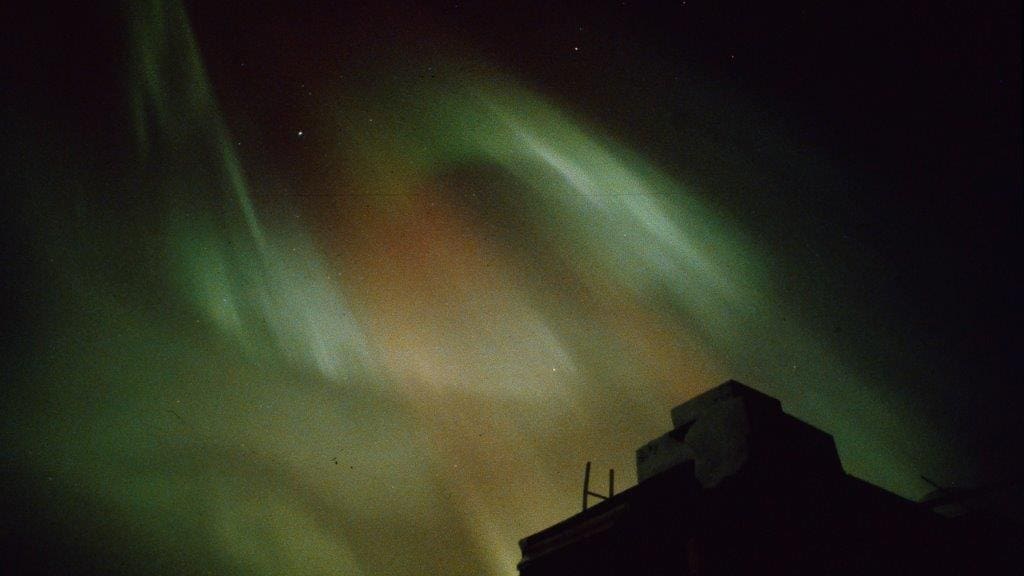
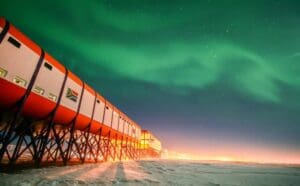
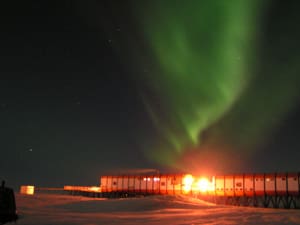 “Auroras provide direct visual evidence that the atmosphere is shielding life on Earth from the radiation hazards of space.” – Michael Kosch, SANSA.
“Auroras provide direct visual evidence that the atmosphere is shielding life on Earth from the radiation hazards of space.” – Michael Kosch, SANSA.
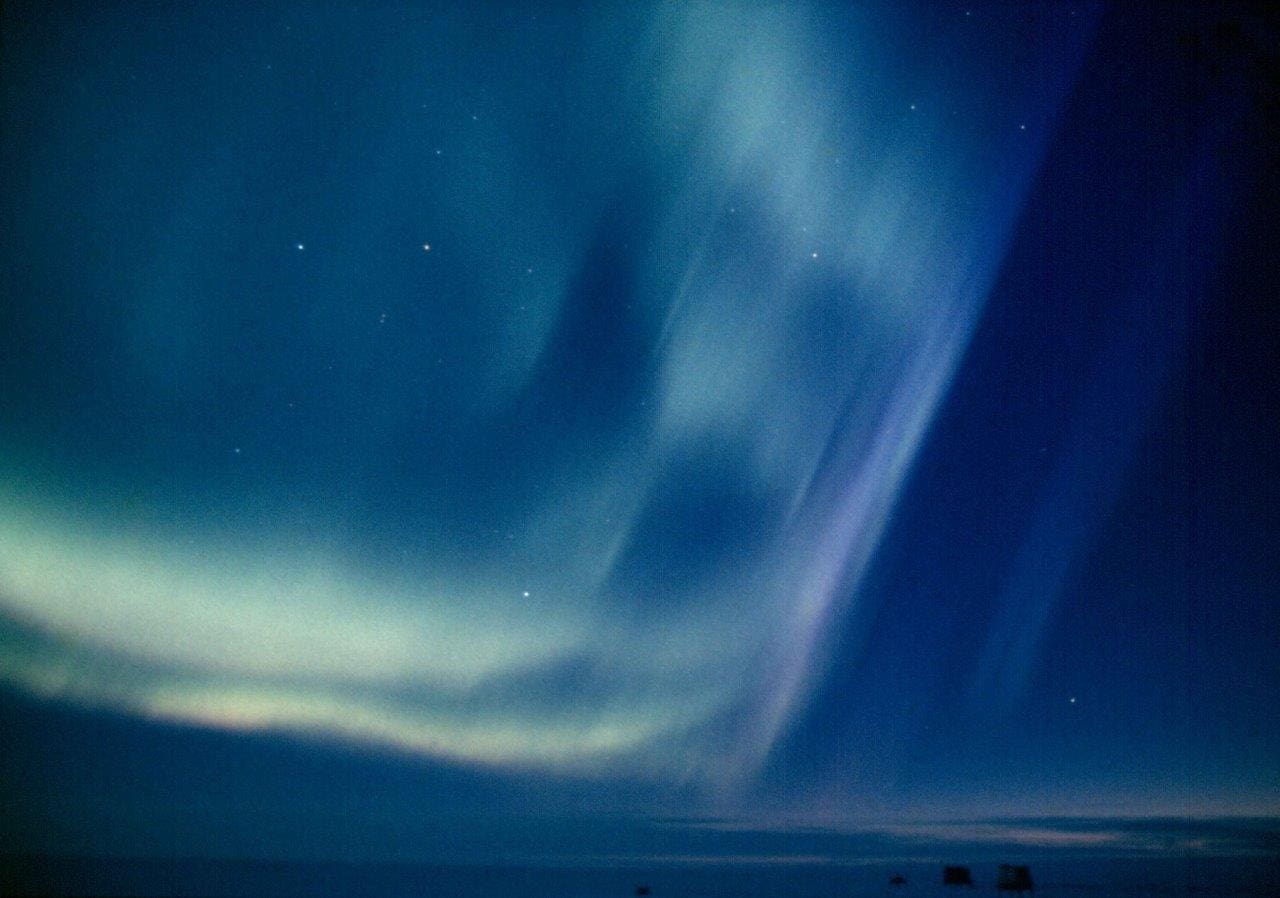
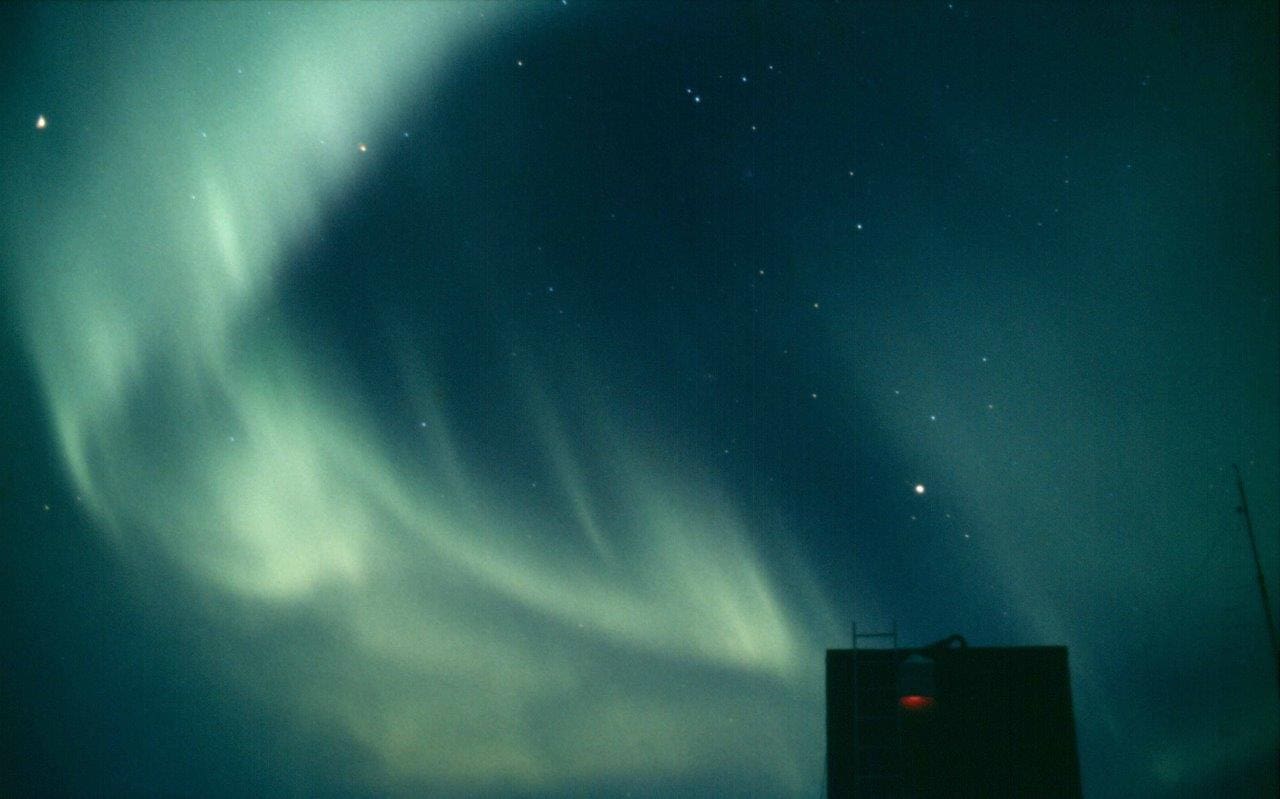 About 10% of the solar wind becomes trapped on the Earth’s magnetic field lines in a process called magnetic reconnection, the rest is rejected and flows past the planet into deep space. The trapped particles accumulate, but this cannot go on forever. They are eventually released into the upper-atmosphere in a process called substorms, exciting the atomic oxygen and molecular nitrogen to produce the familiar green and red colours from oxygen, and sometimes the blue colour as well from nitrogen. Charged particles, such as electrons and protons, are constrained to follow the magnetic field lines, and since the Earth’s magnetic field is similar to a dipole bar magnetic, it is only in polar regions where the magnetic field lines reach down to the ground, which is why the auroras appear mostly in polar regions.
About 10% of the solar wind becomes trapped on the Earth’s magnetic field lines in a process called magnetic reconnection, the rest is rejected and flows past the planet into deep space. The trapped particles accumulate, but this cannot go on forever. They are eventually released into the upper-atmosphere in a process called substorms, exciting the atomic oxygen and molecular nitrogen to produce the familiar green and red colours from oxygen, and sometimes the blue colour as well from nitrogen. Charged particles, such as electrons and protons, are constrained to follow the magnetic field lines, and since the Earth’s magnetic field is similar to a dipole bar magnetic, it is only in polar regions where the magnetic field lines reach down to the ground, which is why the auroras appear mostly in polar regions.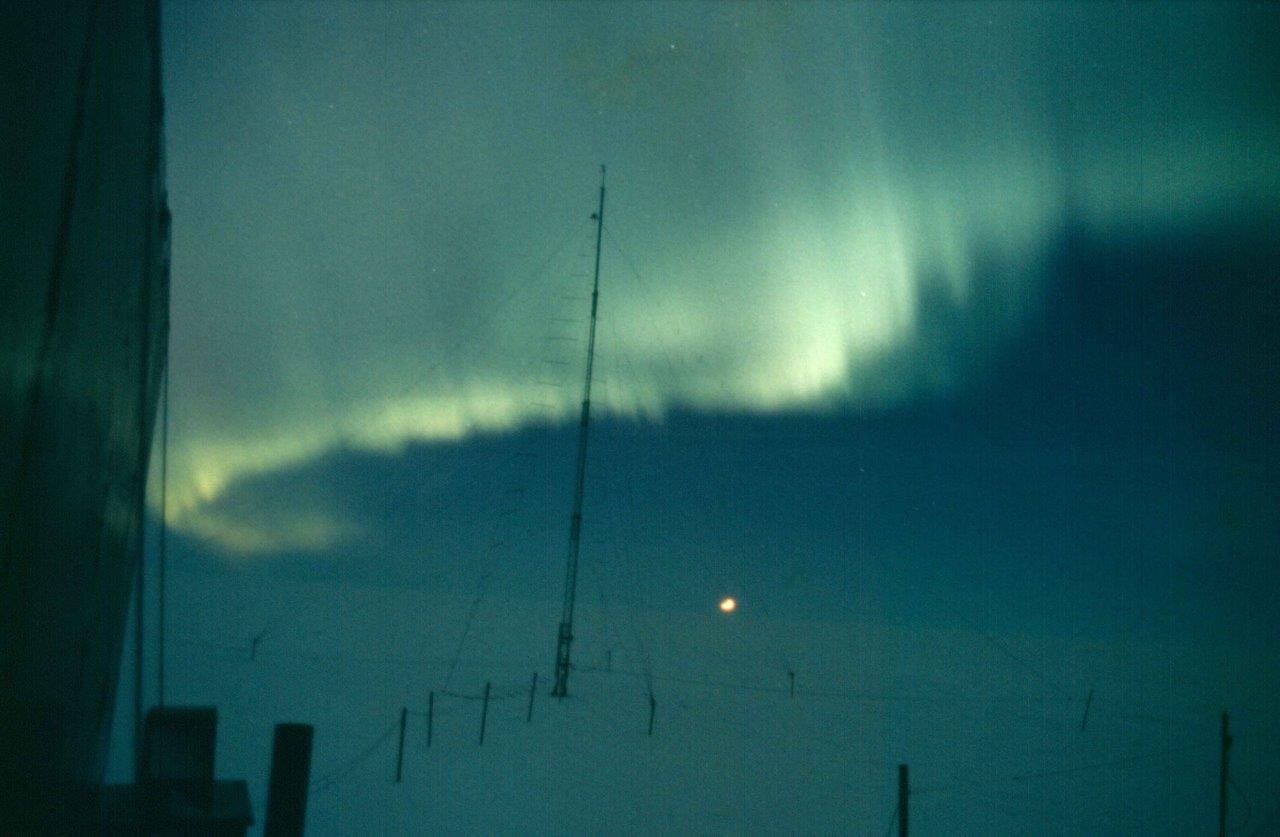

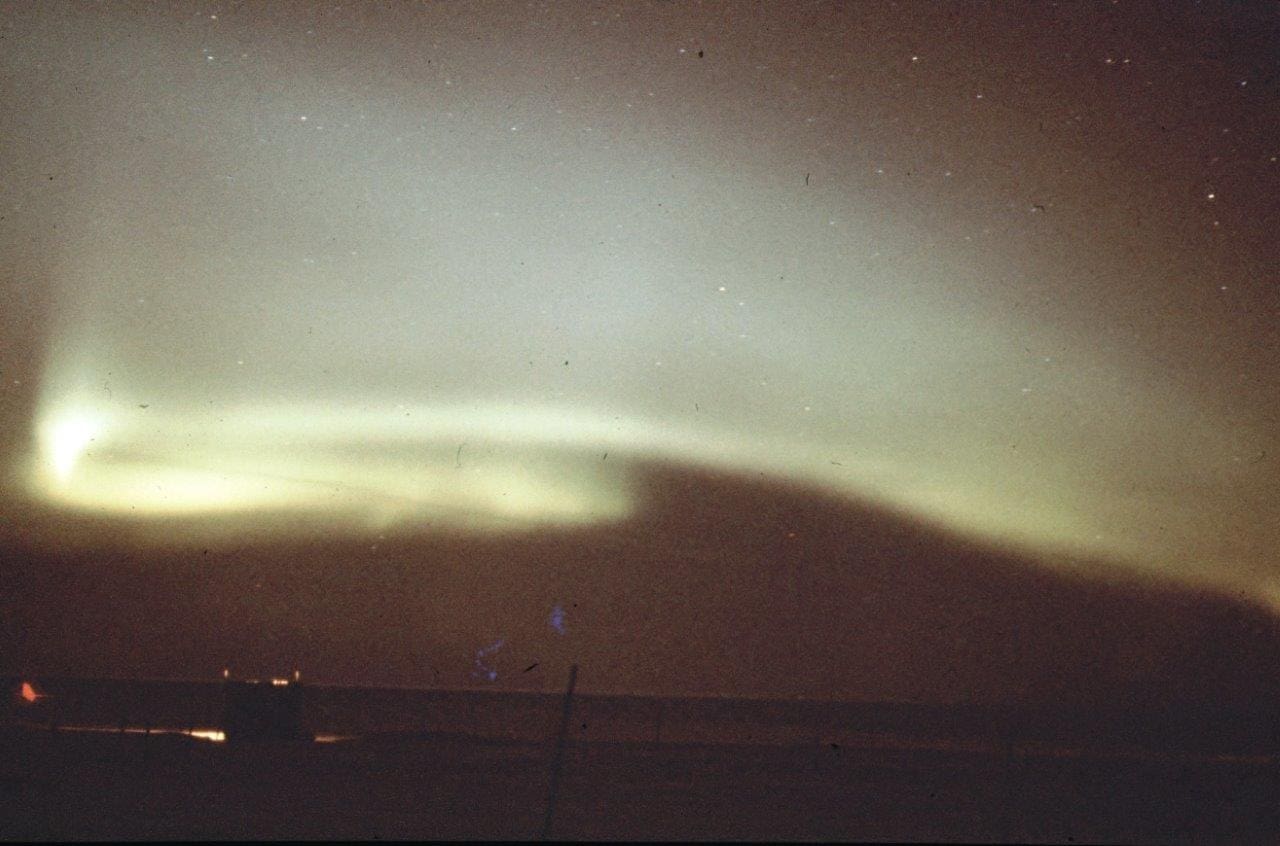 Auroras appear in the height range 100 to 300 km above the Earth’s surface, typically with red, green and blue appearing near the top, middle and bottom, respectively, of this height range. The height of the auroras, and therefore their colour, depends on the energy of the particles, with higher energy able to penetrate to lower altitudes. Auroras are rarely seen at lower latitudes such as South Africa except during major geomagnetic storms, an example of which occurred in 1989 when auroras were visible from Durban.
Auroras appear in the height range 100 to 300 km above the Earth’s surface, typically with red, green and blue appearing near the top, middle and bottom, respectively, of this height range. The height of the auroras, and therefore their colour, depends on the energy of the particles, with higher energy able to penetrate to lower altitudes. Auroras are rarely seen at lower latitudes such as South Africa except during major geomagnetic storms, an example of which occurred in 1989 when auroras were visible from Durban. The following are a few articles in the South African Journal on Antarctic Research available on the Antarctic Legacy of South Africa (ALSA) digital repository
The following are a few articles in the South African Journal on Antarctic Research available on the Antarctic Legacy of South Africa (ALSA) digital repository
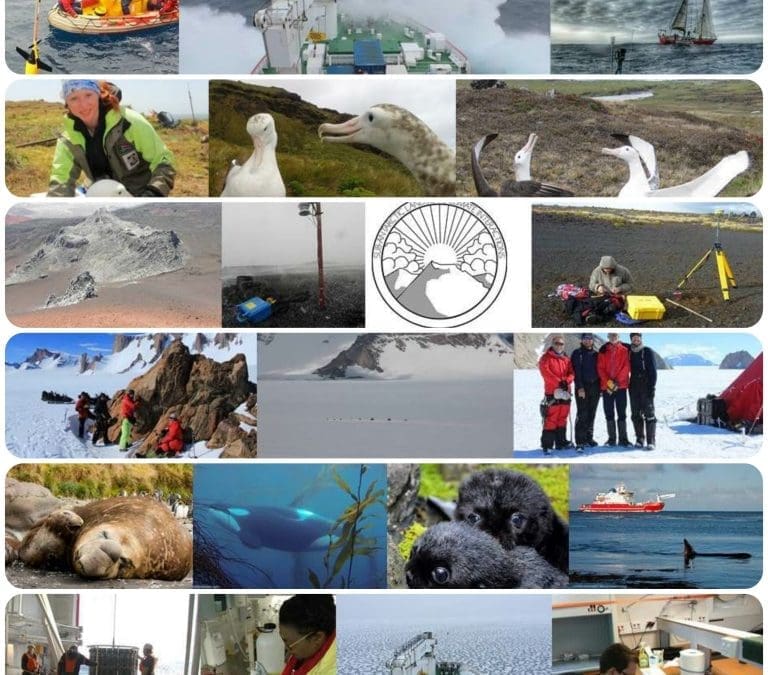

 It is nearing the end of the
It is nearing the end of the 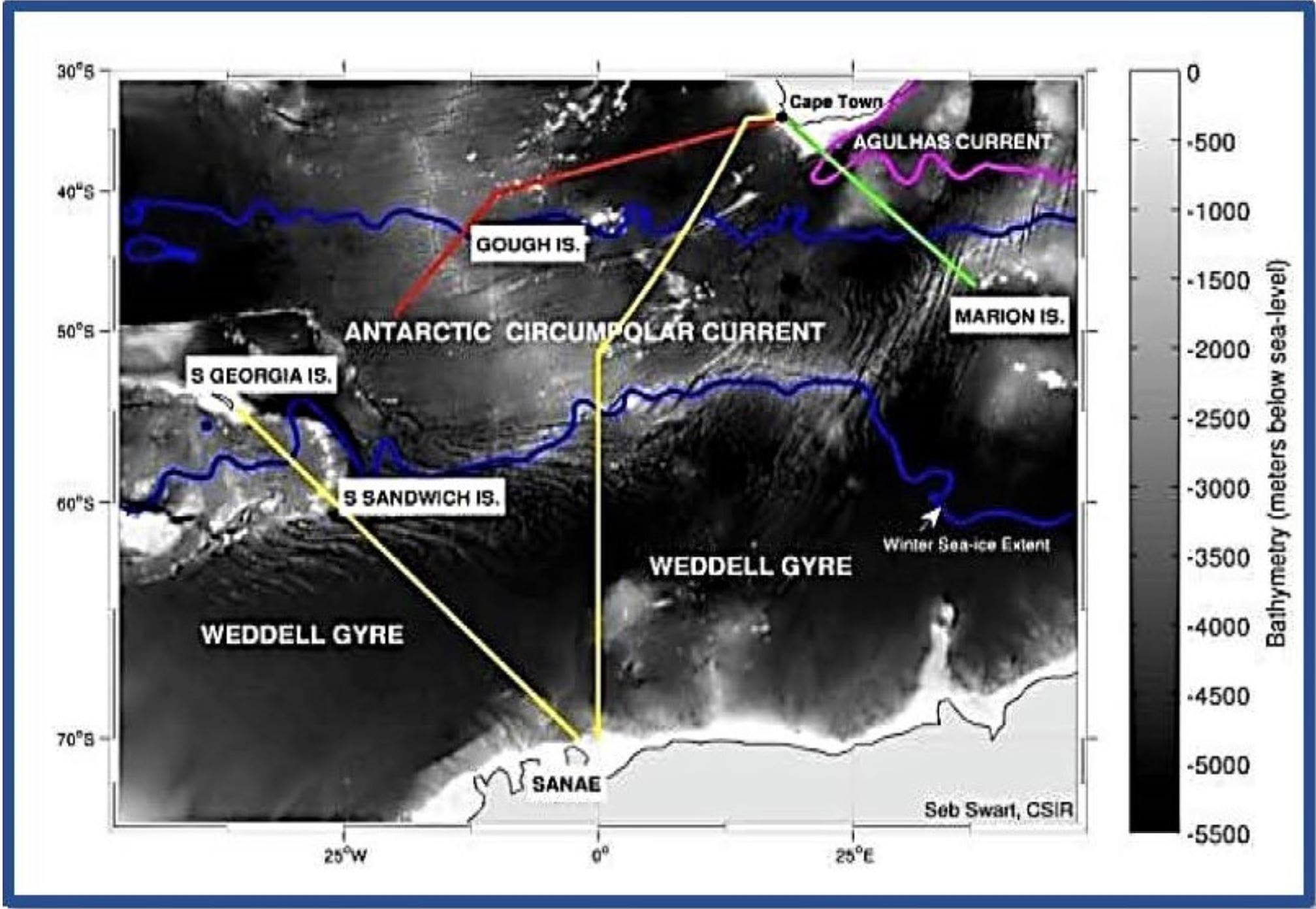 South Africa’s geographical coverage of the Southern Hemisphere oceans and access to the Antarctic region. The coloured lines represent the domains covered by annual South African research and logistical voyages (carried out by the S.A. Agulhas II): Marion Island, Gough and Tristan du Cunha Islands, SANAE IV base, South Georgia Island and South Sandwich Islands. The blue lines represent the northern and southern extent of the Antarctic Circumpolar Current, while the magenta line represents the position of the Agulhas Current and Retroflection. The maximum winter sea-ice extent is indicated. The background shading represents the ocean depth (meters below sea-level).
South Africa’s geographical coverage of the Southern Hemisphere oceans and access to the Antarctic region. The coloured lines represent the domains covered by annual South African research and logistical voyages (carried out by the S.A. Agulhas II): Marion Island, Gough and Tristan du Cunha Islands, SANAE IV base, South Georgia Island and South Sandwich Islands. The blue lines represent the northern and southern extent of the Antarctic Circumpolar Current, while the magenta line represents the position of the Agulhas Current and Retroflection. The maximum winter sea-ice extent is indicated. The background shading represents the ocean depth (meters below sea-level). 

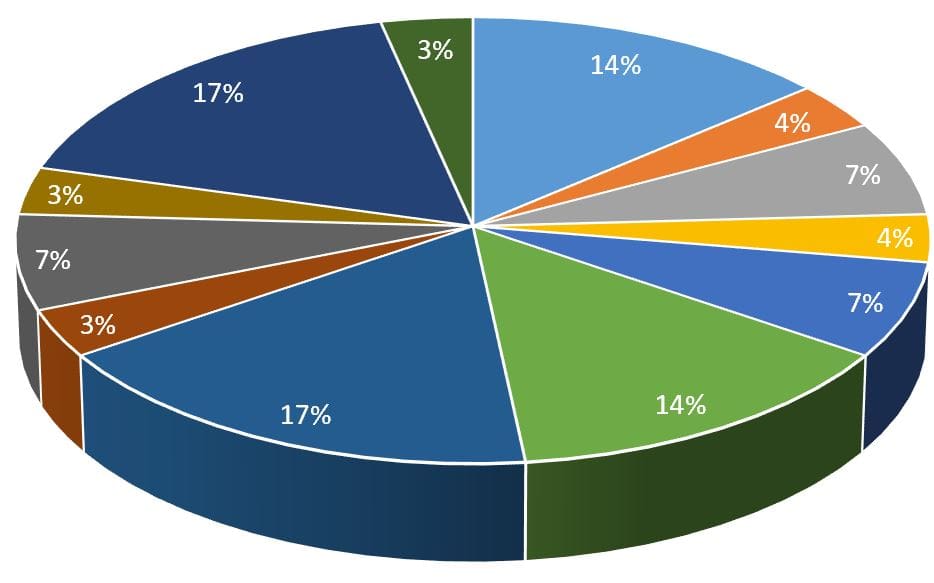
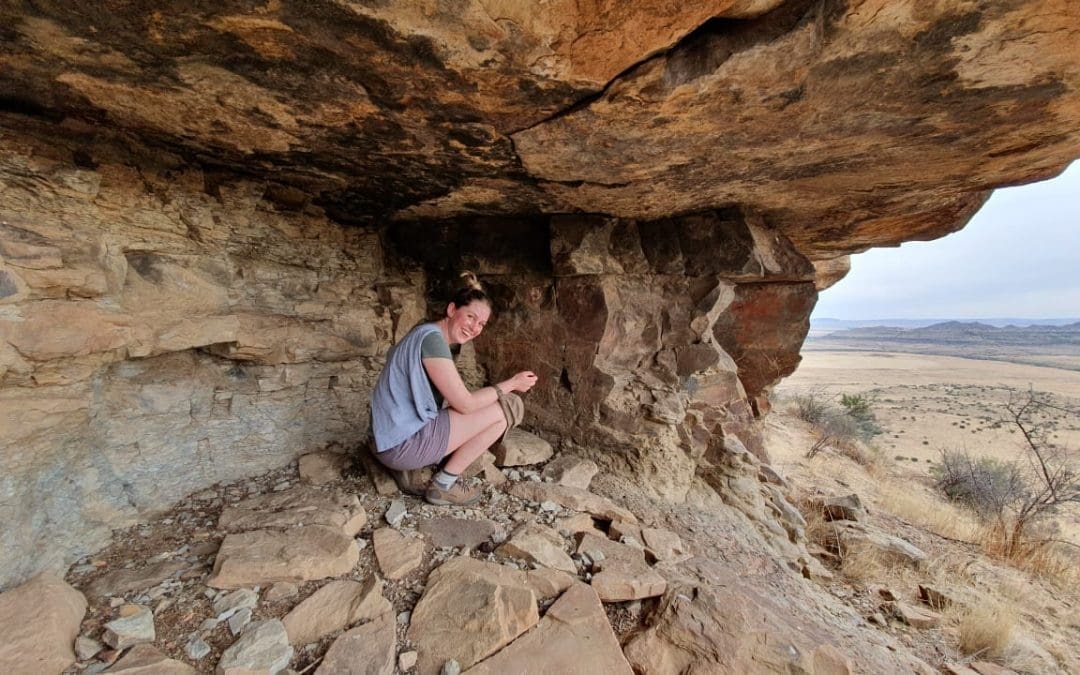
 Liezel (Elizabeth) Rudolph obtained her Geography BSc and Honours degrees at the University of Pretoria, and a MSc at Rhodes University. She also has a PGCE from UNISA, which allowed her to teach Geography at Abbott’s College in Pretoria for a few years. She is currently in the final stages of her PhD (also in Geography) at the
Liezel (Elizabeth) Rudolph obtained her Geography BSc and Honours degrees at the University of Pretoria, and a MSc at Rhodes University. She also has a PGCE from UNISA, which allowed her to teach Geography at Abbott’s College in Pretoria for a few years. She is currently in the final stages of her PhD (also in Geography) at the 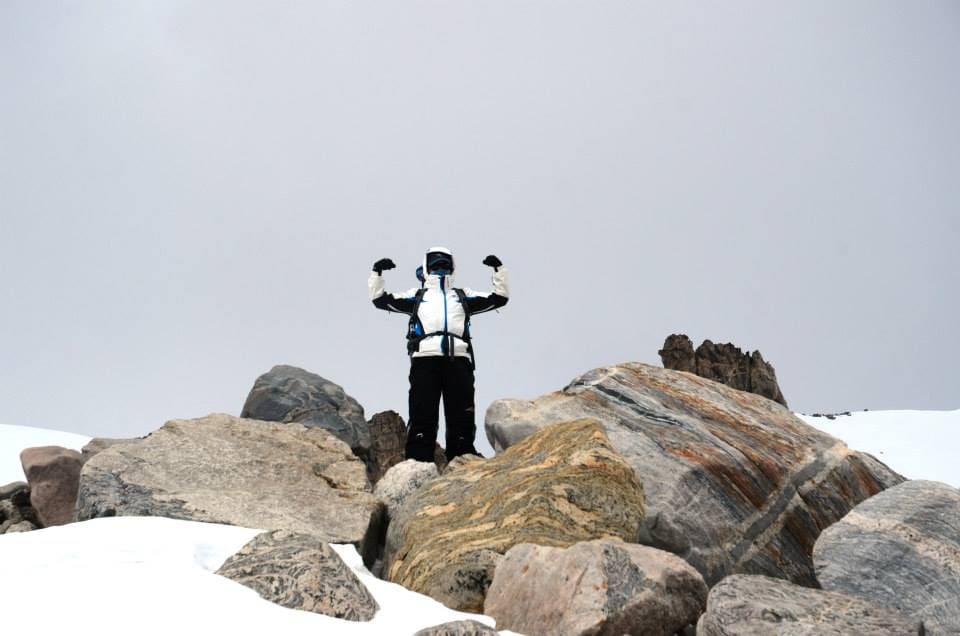

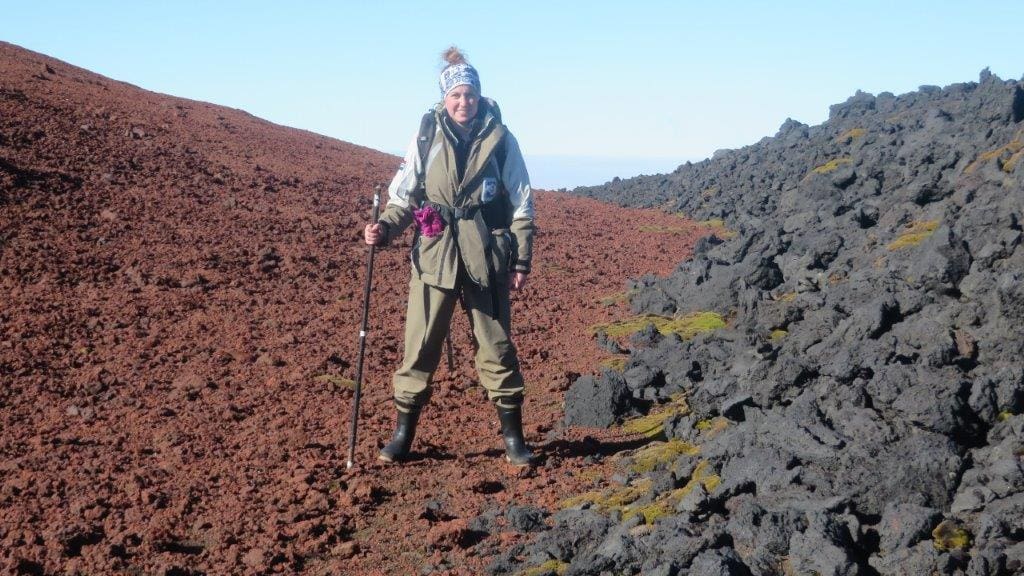


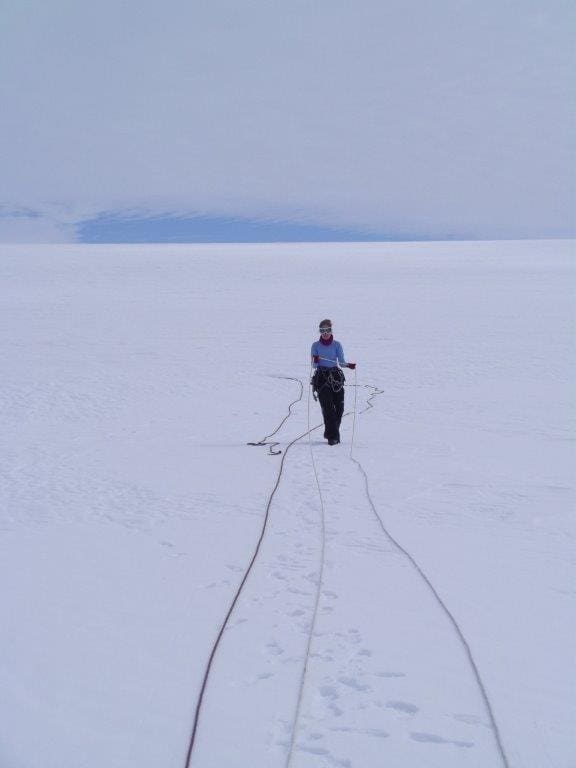
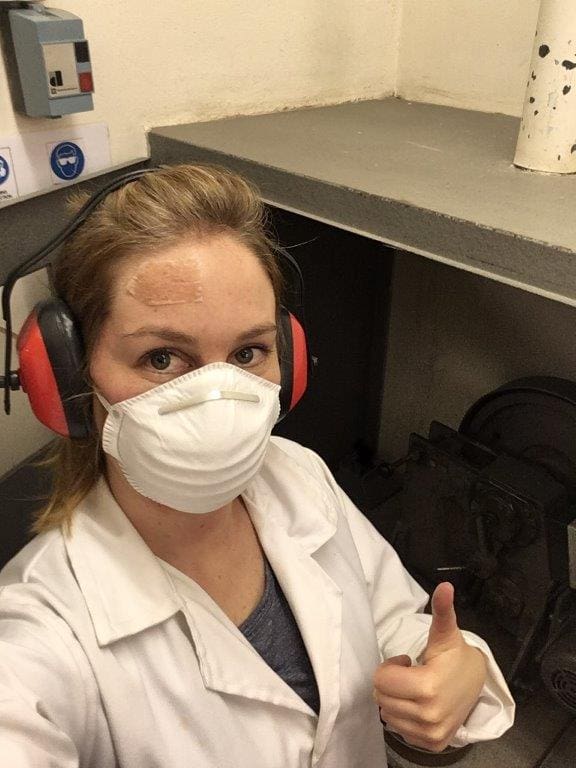
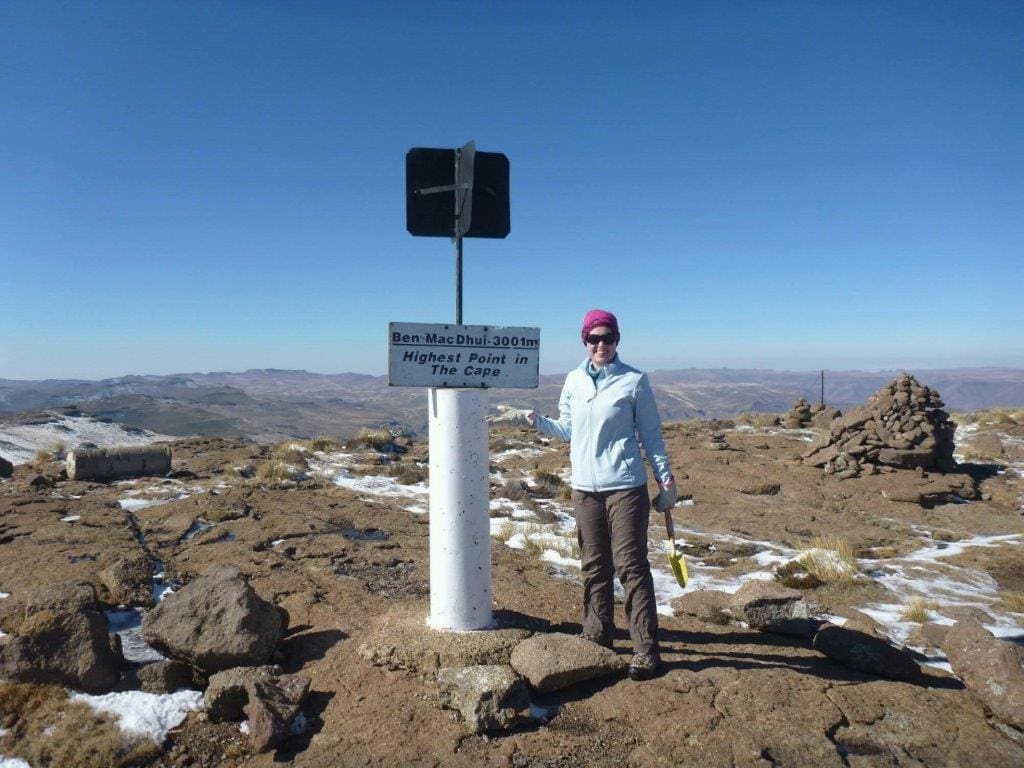


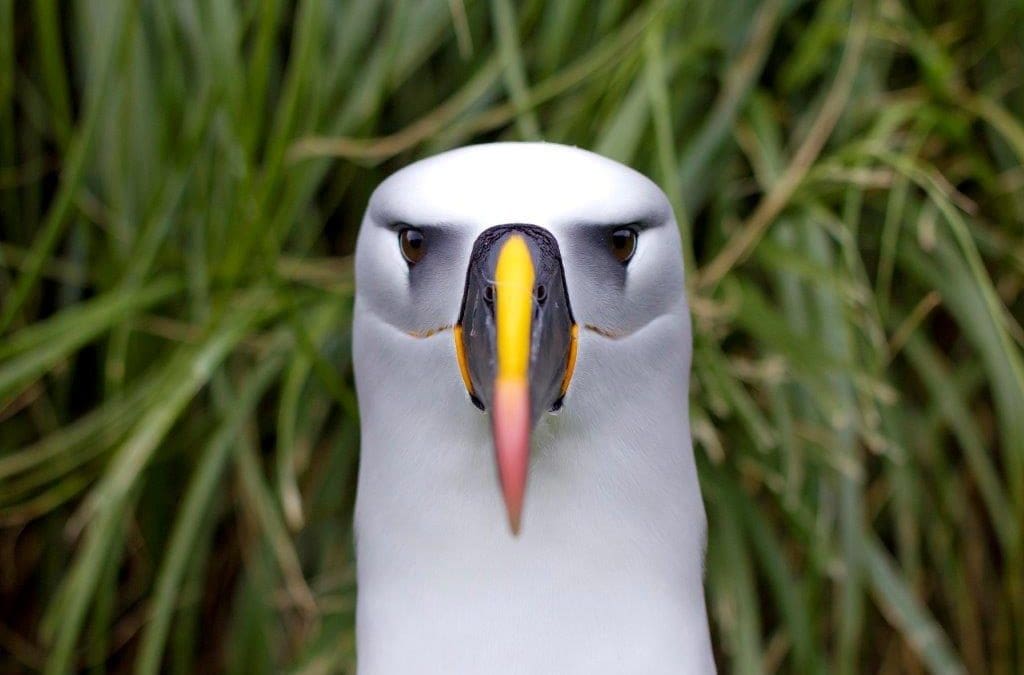
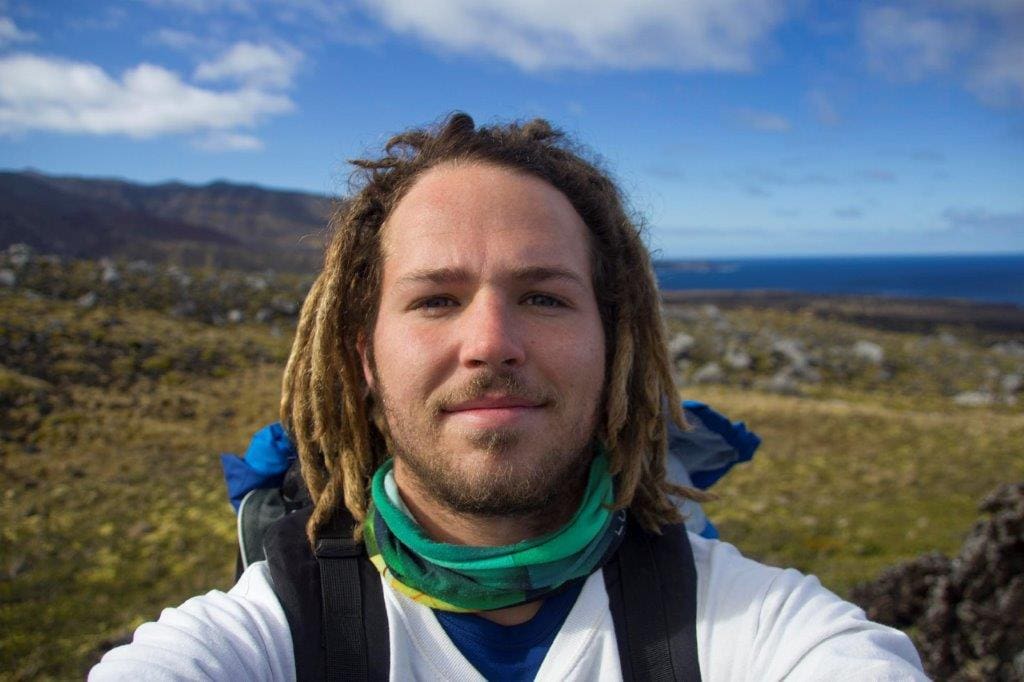
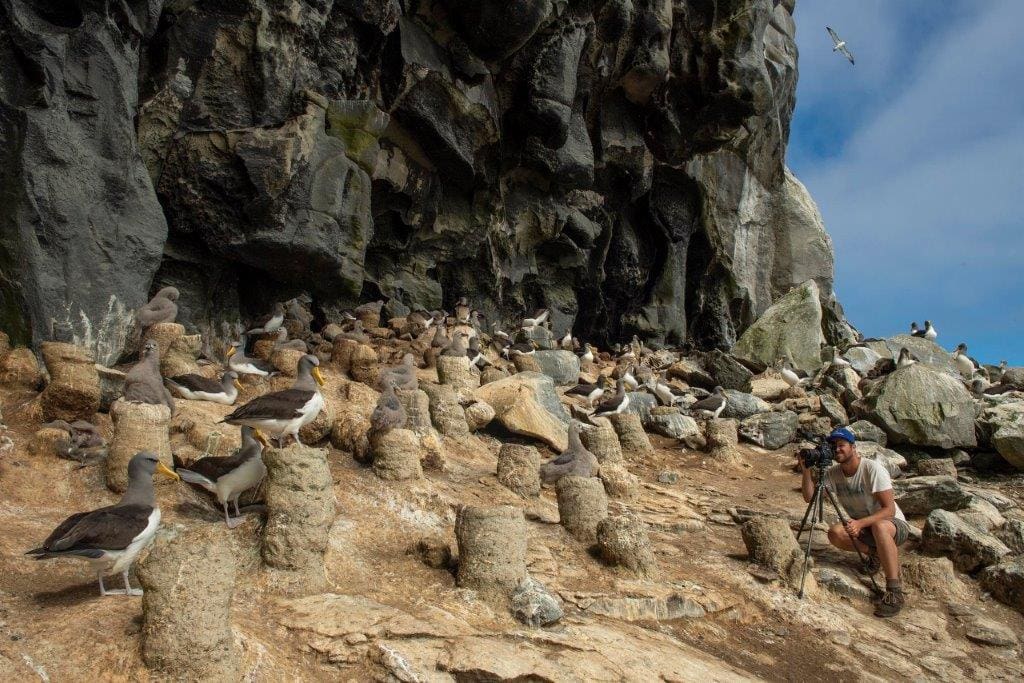
 In 2017, I assisted National Geographic photographer Thomas Peschak on a shoot to document Marion Island’s incredible seabird diversity, during which we received enormous support from SANAP. Images from the trip were published in the July 2018 issue of
In 2017, I assisted National Geographic photographer Thomas Peschak on a shoot to document Marion Island’s incredible seabird diversity, during which we received enormous support from SANAP. Images from the trip were published in the July 2018 issue of 

 (Images during 2011/2012 on Marion Island. L-R: Ice Plateau, Amphitheatre, Mascarin Summit)I have also really enjoyed being able to share my images and
(Images during 2011/2012 on Marion Island. L-R: Ice Plateau, Amphitheatre, Mascarin Summit)I have also really enjoyed being able to share my images and 



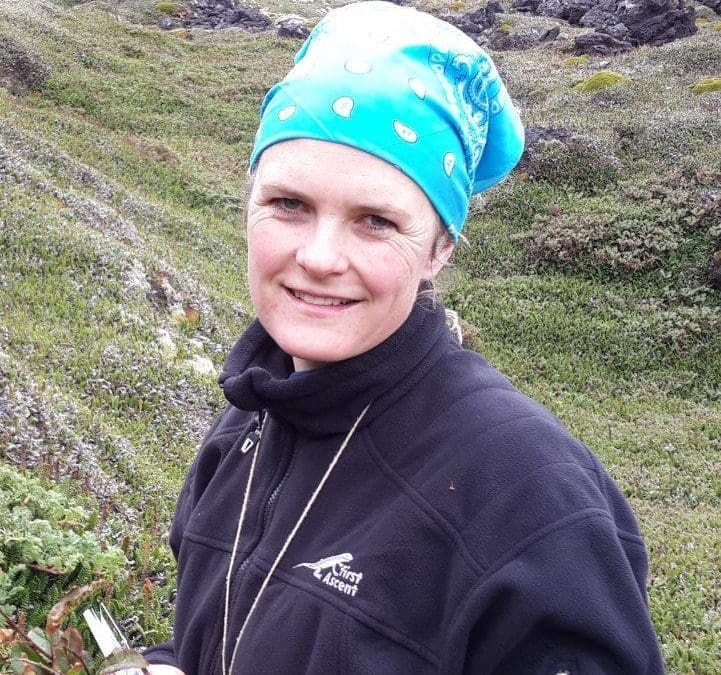
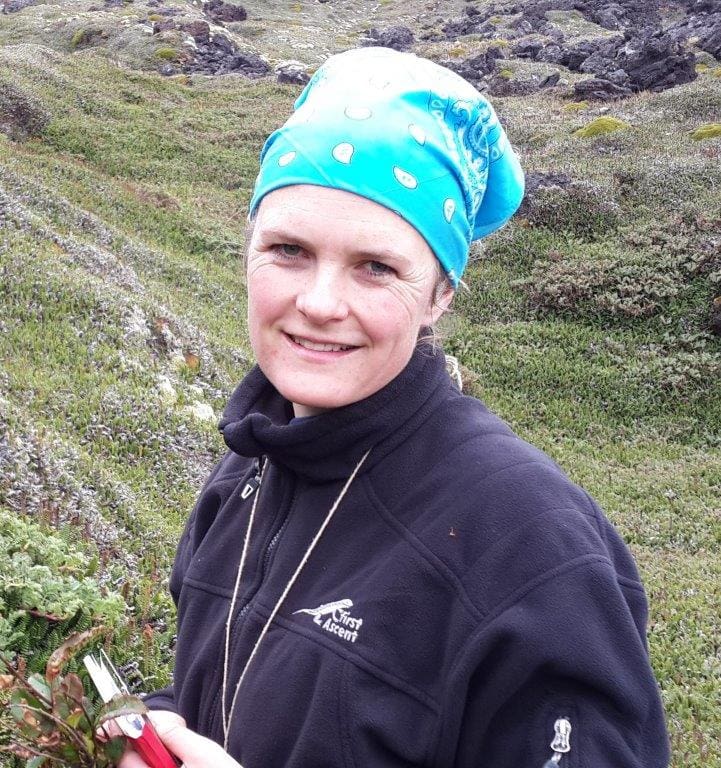 I grew up in
I grew up in 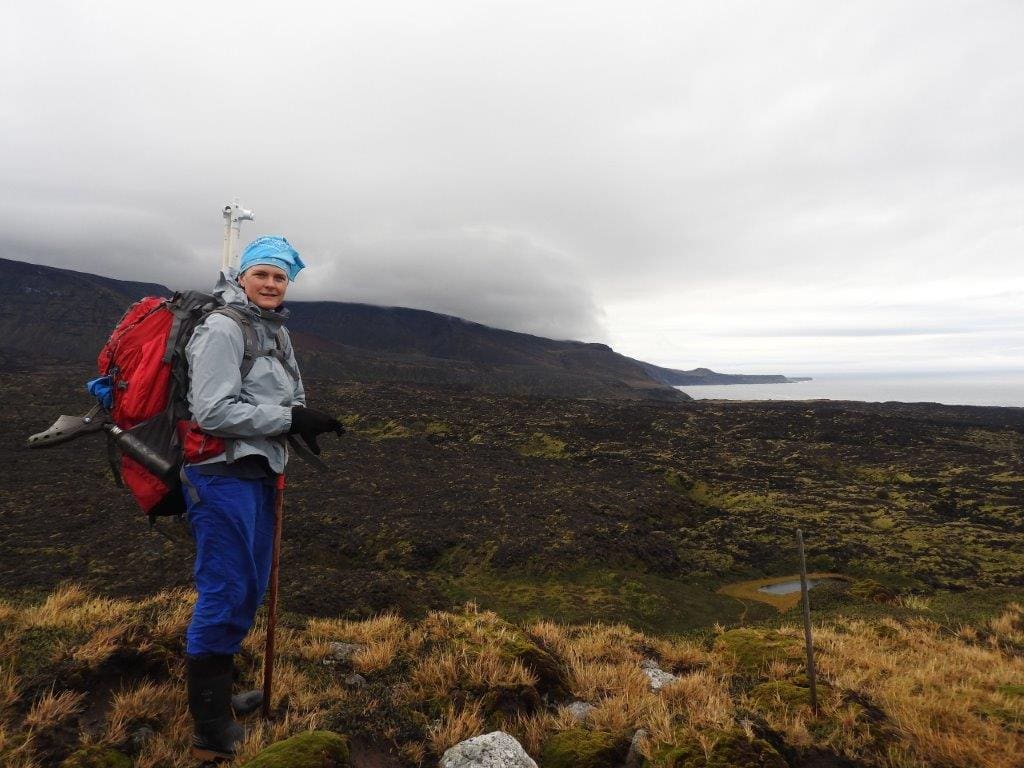
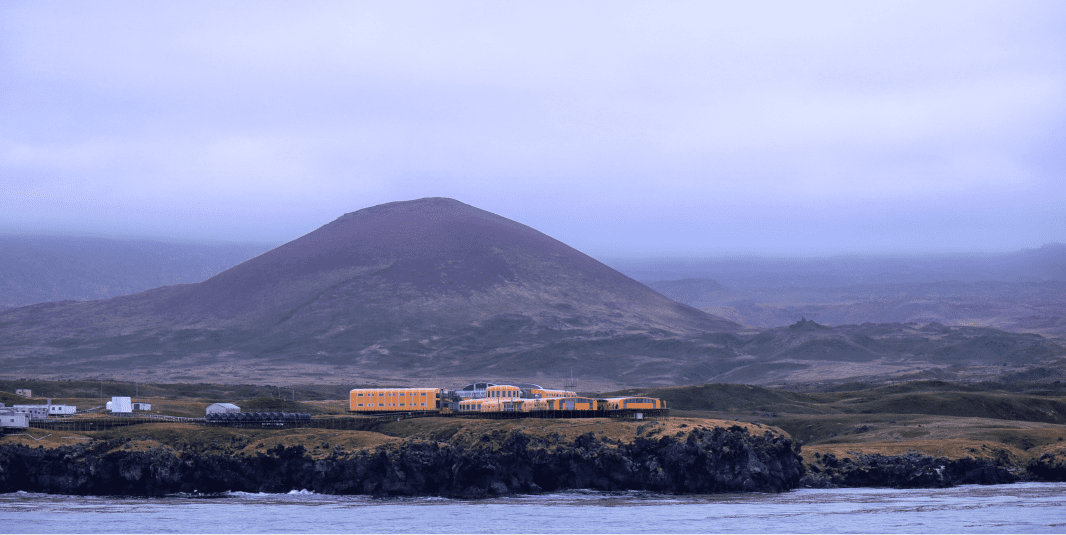 I continued pursuing an MSc and PhD in the biogeography of birds and plants in Africa: somewhat warmer and greener places (I completed these degrees in Stellenbosch and in Denmark respectively). Here I developed my second passion: savanna ecology. After taking up my position in the
I continued pursuing an MSc and PhD in the biogeography of birds and plants in Africa: somewhat warmer and greener places (I completed these degrees in Stellenbosch and in Denmark respectively). Here I developed my second passion: savanna ecology. After taking up my position in the 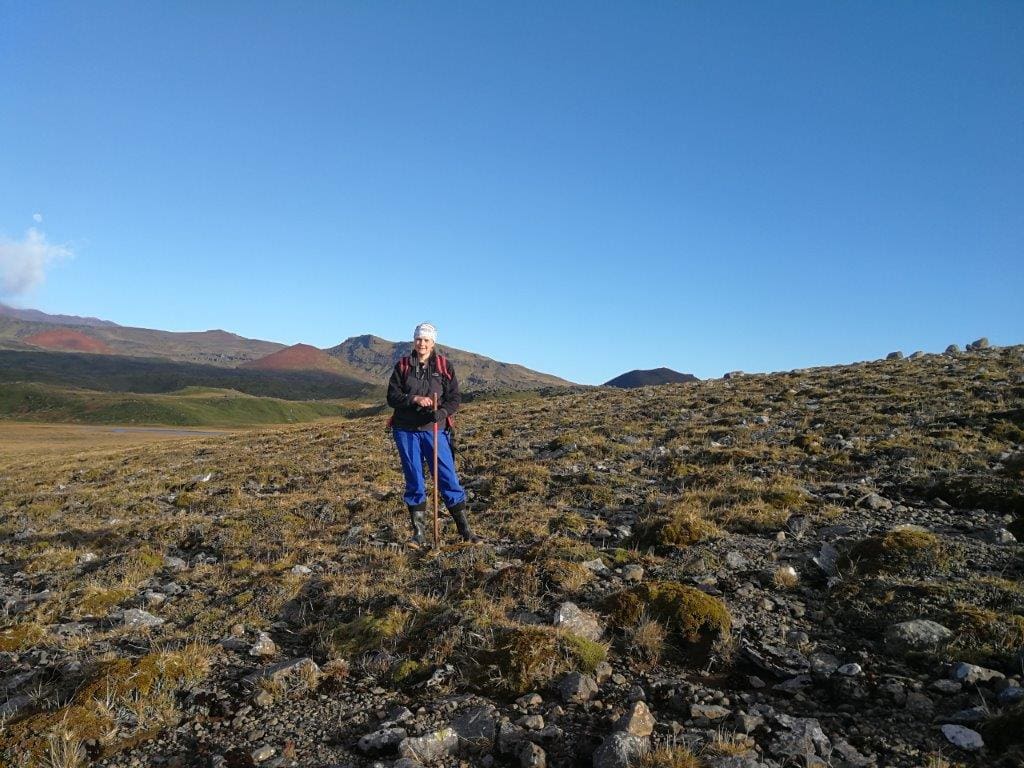
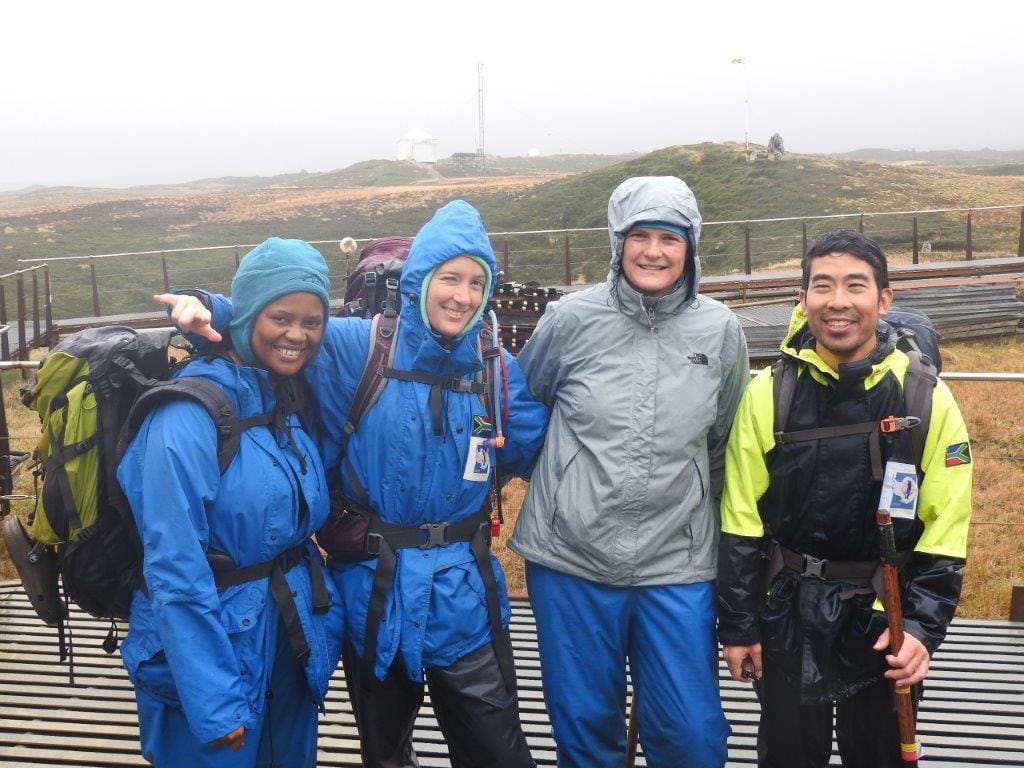
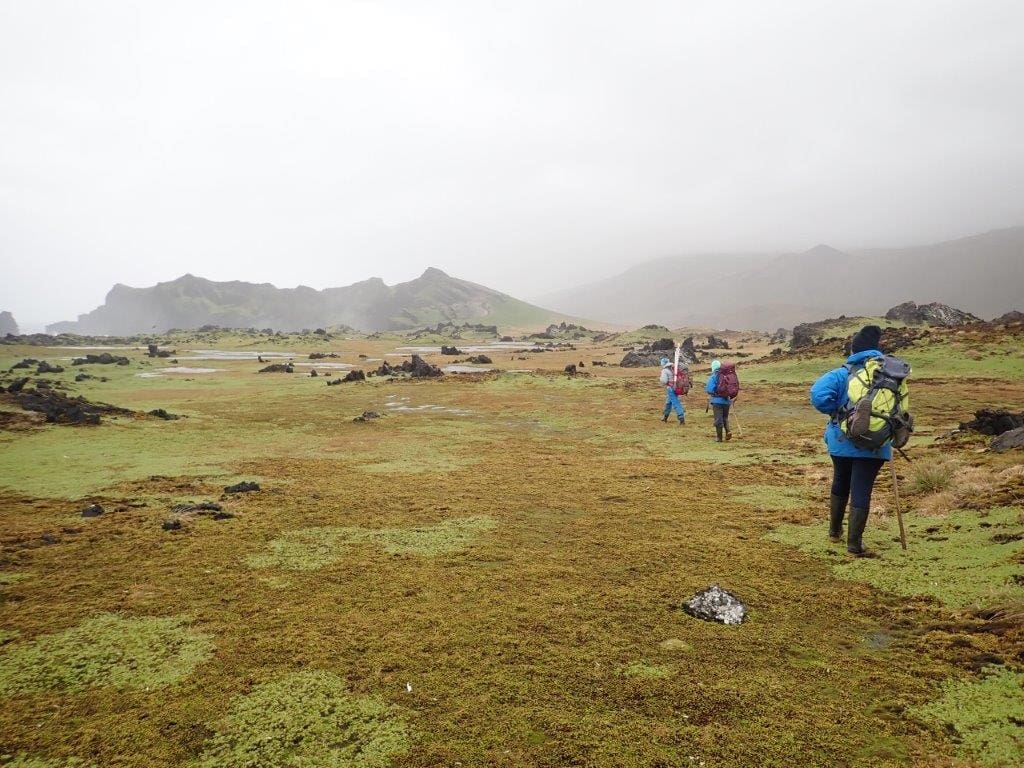 Much of the work that we have been doing on Marion Island deals with invasive species (especially plants) and what determines their distribution and success. Even though sub-Antarctic islands like Marion Island are some of the most isolated places on Earth, they have not been totally spared from human activities. Invasive species constitute one of the largest threats to the islands. These have mostly been introduced accidentally in e.g. building rubble, stuck in people’s shoes or the Velcro of their jackets, or in food supplies. Not all exotic species that have arrived at the islands have survived, but those that have, have often managed to spread and in some cases have had large negative impacts on the native species and ecosystem. Additionally, Marion Island is rapidly warming, and this is benefitting invasive species which are able to better survive under the mild conditions. How invasive species will be affected by climate change compared to native species forms a further particular interest. There is already some evidence of invasive species benefitting more than native species; but together with Prof Michael Cramer from UCT and Brad Ripley from Rhodes University, we are also studying how factors other than climate, e.g. soil characteristics, may limit the spread of invasive species, even under climate change. (image below during The POLAR2018 symposium in Davos, Siwtzerland)
Much of the work that we have been doing on Marion Island deals with invasive species (especially plants) and what determines their distribution and success. Even though sub-Antarctic islands like Marion Island are some of the most isolated places on Earth, they have not been totally spared from human activities. Invasive species constitute one of the largest threats to the islands. These have mostly been introduced accidentally in e.g. building rubble, stuck in people’s shoes or the Velcro of their jackets, or in food supplies. Not all exotic species that have arrived at the islands have survived, but those that have, have often managed to spread and in some cases have had large negative impacts on the native species and ecosystem. Additionally, Marion Island is rapidly warming, and this is benefitting invasive species which are able to better survive under the mild conditions. How invasive species will be affected by climate change compared to native species forms a further particular interest. There is already some evidence of invasive species benefitting more than native species; but together with Prof Michael Cramer from UCT and Brad Ripley from Rhodes University, we are also studying how factors other than climate, e.g. soil characteristics, may limit the spread of invasive species, even under climate change. (image below during The POLAR2018 symposium in Davos, Siwtzerland)
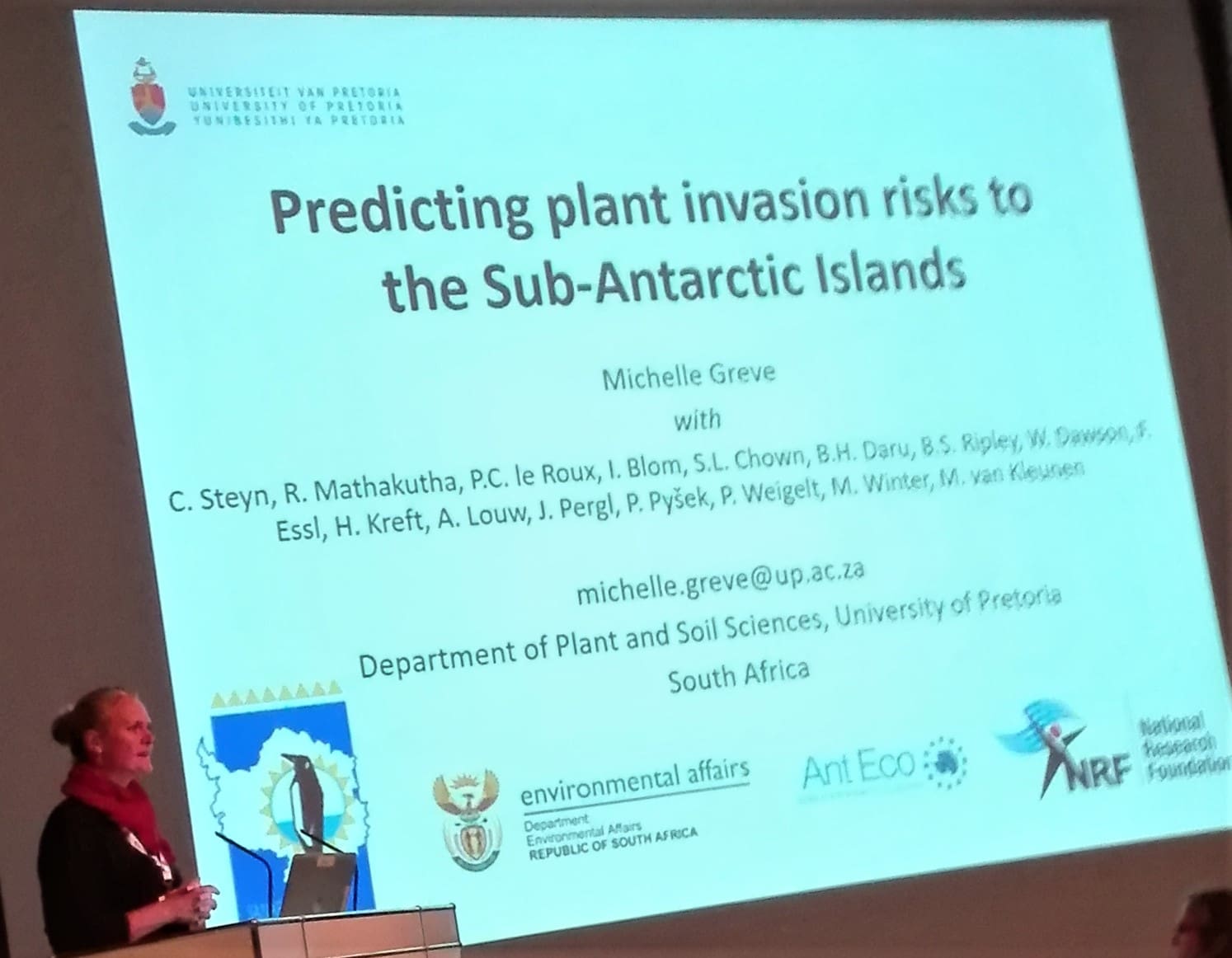 There are many things I enjoy about my career. I am always learning more, and by conducting research, I am also contributing to new knowledge. As an ecologist, I enjoy the opportunities to see wild places all over South Africa and beyond, to understand how they function, and to hopefully contribute to their protection and appropriate management. I have also met, and made friends with, many wonderful, kind and intelligent people through my work. I especially enjoy the interactions I get to have with students: it is rewarding to see them develop skills and self-confidence, and learning from them as people who possess different world views from me, have skills different to mine, and in many cases overtake me in their scientific skills and knowledge.
There are many things I enjoy about my career. I am always learning more, and by conducting research, I am also contributing to new knowledge. As an ecologist, I enjoy the opportunities to see wild places all over South Africa and beyond, to understand how they function, and to hopefully contribute to their protection and appropriate management. I have also met, and made friends with, many wonderful, kind and intelligent people through my work. I especially enjoy the interactions I get to have with students: it is rewarding to see them develop skills and self-confidence, and learning from them as people who possess different world views from me, have skills different to mine, and in many cases overtake me in their scientific skills and knowledge.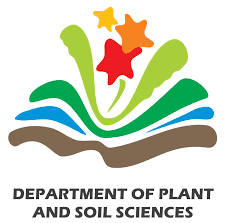
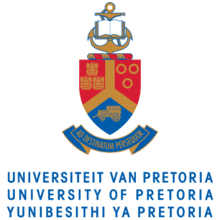

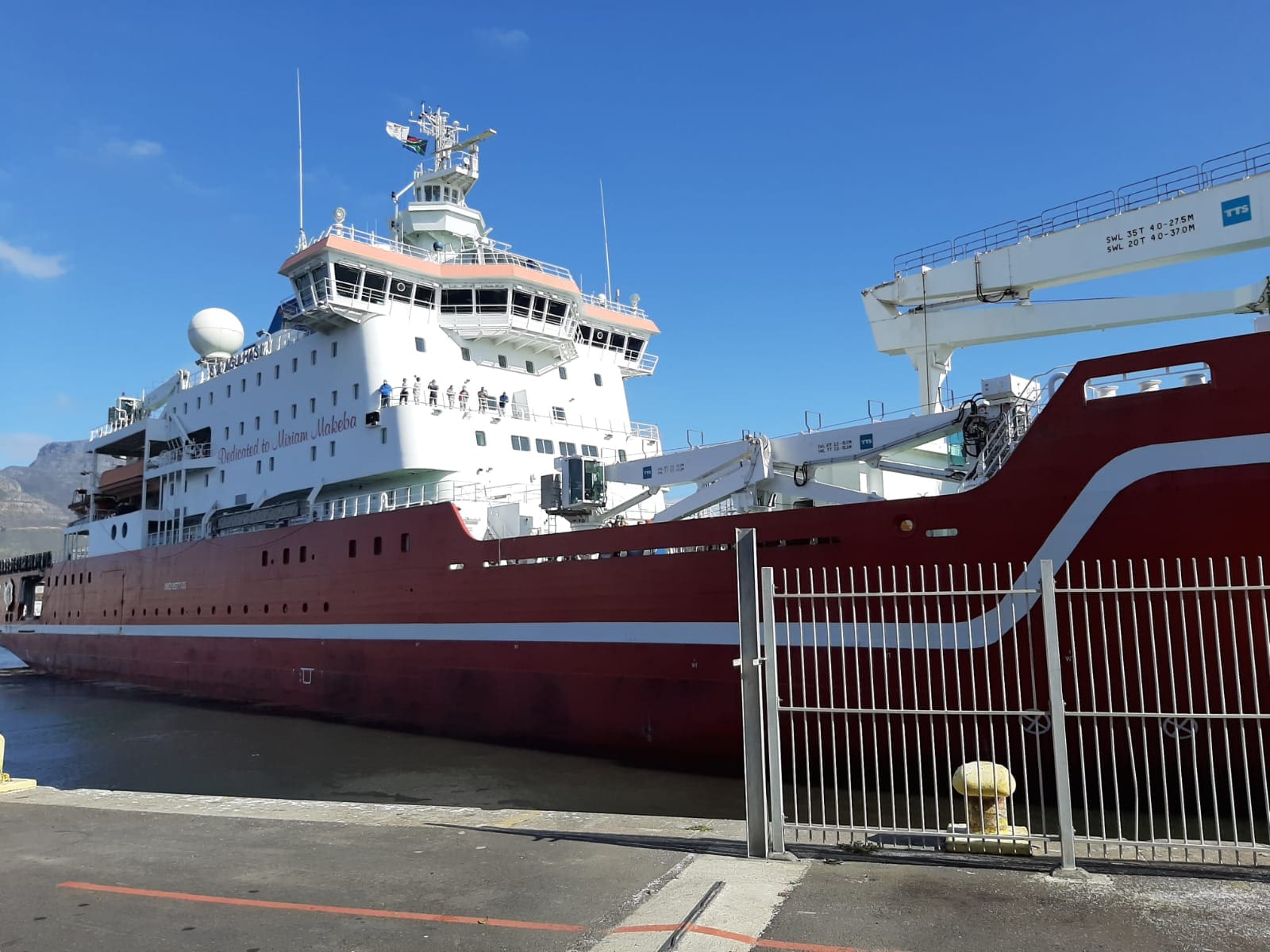 It is the first time in the history of the National Antarctic Programme of South Africa(SANAP) that there were no family and friends to wave farewell to
It is the first time in the history of the National Antarctic Programme of South Africa(SANAP) that there were no family and friends to wave farewell to 







